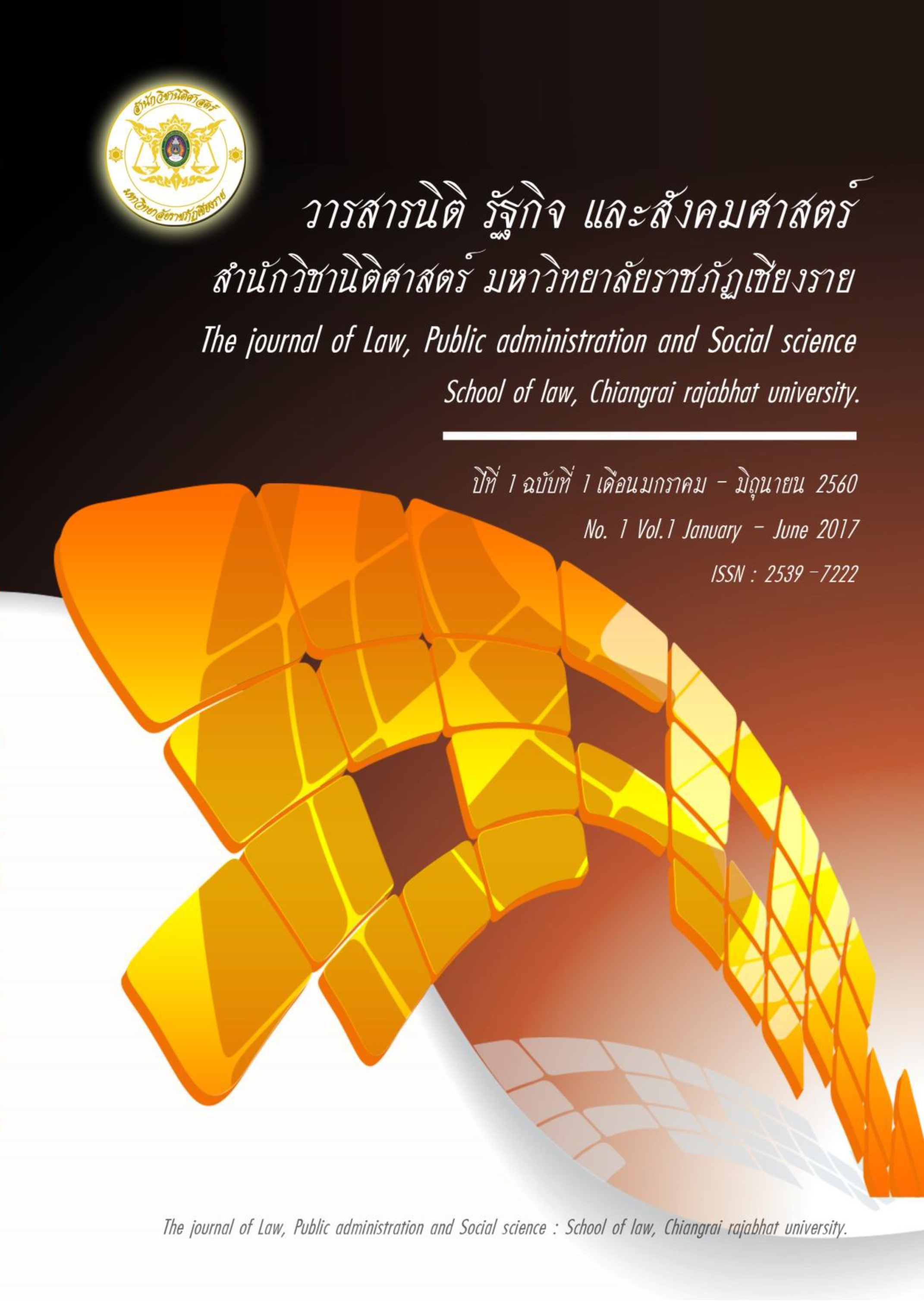ความสำคัญของธรรมสิทธิ์ ในบูรณภาพของผลงานและเจตจำนงของผู้สร้างสรรค์
Main Article Content
Abstract
Moral rights protection covered messages and interpretation of artistic works. Moral rights principle acknowledged honor benefits and passion of the creators which lead to the creation of the works in the first place. It gave precedence to the essence of arts that economic aspect rights protection unable to value. Hence, Moral rights was significant in keeping the will of the original creator including the sustaining of originality of such works. However, In the Era of the internet, people and society has major influences both direct and indirect with the integrity of the creative works which was protected by moral rights.
Article Details
How to Cite
บุญเจริญ ว. (2017). ความสำคัญของธรรมสิทธิ์ ในบูรณภาพของผลงานและเจตจำนงของผู้สร้างสรรค์. CRRU Law, Political Science and Social Science Journal, 1(1), 1–16. Retrieved from https://so06.tci-thaijo.org/index.php/lawcrru/article/view/173678
Section
Academic Articles
References
ไชยยศ เหมะรัชตะ. ลักษณะของกฎหมายทรัพย์สินทางปัญญาพื้นฐานความรู้ทั่วไป. กรุงเทพมหานคร : สำนักพิมพ์นิติธรรม, 2537
CLIFFORD J. LEVY (2010). Russia Uses Microsoft to Suppress Dissent. The New York Times. Retrieved from http://www.nytimes.com/2010/09/12/world/europe/12raids.html
Christopher Heath, Anselm Kamperman Sanders. Landmark Intellectual Property Cases and Their Legacy: IEEM International Intellectual Property Conferences. Kluwer Law International. 2011. p. 18
Christopher Levy (February 3 2003). "Making Money with Streaming Media”. Retrieved from http://www.streamingmedia.com/Articles/Editorial/Featured-Articles/Making-Money-with-Streaming-Media-64547.aspx.
Lawrence Lessig. Remix: Making Art and Commerce Thrive in the Hybrid Economy. Bloomsbury Academic. 2008. London. p. 76-81.
Natalie C. Suhl. Moral Rights Protection in the United States Under the Berne Convention: A Fictional Work?. Fordham Intellectual Property, Media and Entertainment Law Journal. volume 12 Issue 4. 2002. Retrieved from http://ir.lawnet.fordham.edu/cgi/viewcontent.cgi?article=1239&context=iplj
The Bloody Case That Started From A Steamed Bun, Retrieved from http://www.zonaeuropa.com/culture/c20060108_1.htm
William Fisher. THEORIES OF INTELLECTUAL PROPERTY. 2000. p.34. Retrieved from https://cyber.harvard.edu/people/tfisher/iptheory.pdf
CLIFFORD J. LEVY (2010). Russia Uses Microsoft to Suppress Dissent. The New York Times. Retrieved from http://www.nytimes.com/2010/09/12/world/europe/12raids.html
Christopher Heath, Anselm Kamperman Sanders. Landmark Intellectual Property Cases and Their Legacy: IEEM International Intellectual Property Conferences. Kluwer Law International. 2011. p. 18
Christopher Levy (February 3 2003). "Making Money with Streaming Media”. Retrieved from http://www.streamingmedia.com/Articles/Editorial/Featured-Articles/Making-Money-with-Streaming-Media-64547.aspx.
Lawrence Lessig. Remix: Making Art and Commerce Thrive in the Hybrid Economy. Bloomsbury Academic. 2008. London. p. 76-81.
Natalie C. Suhl. Moral Rights Protection in the United States Under the Berne Convention: A Fictional Work?. Fordham Intellectual Property, Media and Entertainment Law Journal. volume 12 Issue 4. 2002. Retrieved from http://ir.lawnet.fordham.edu/cgi/viewcontent.cgi?article=1239&context=iplj
The Bloody Case That Started From A Steamed Bun, Retrieved from http://www.zonaeuropa.com/culture/c20060108_1.htm
William Fisher. THEORIES OF INTELLECTUAL PROPERTY. 2000. p.34. Retrieved from https://cyber.harvard.edu/people/tfisher/iptheory.pdf

